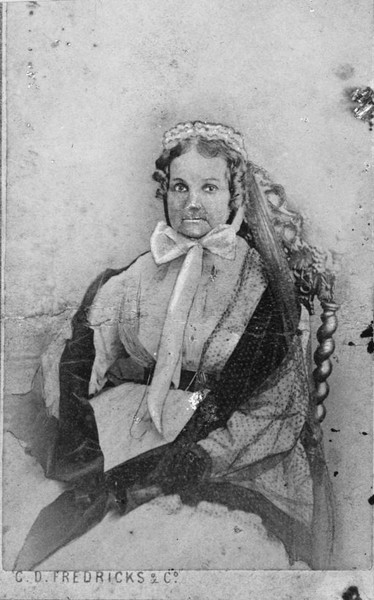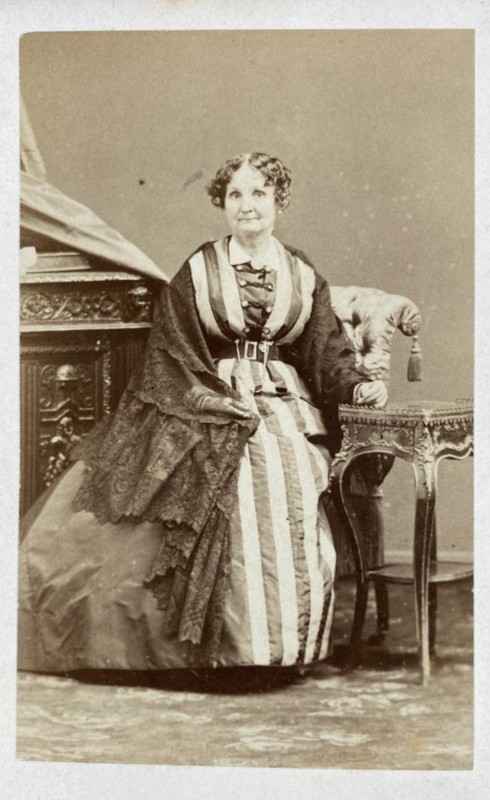Econchatti
Introduction
Text-to-speech Audio
This former cotton plantation in Jefferson County was owned by Prince Achille Murat and his wife, Catherine Willis Gray Murat. The plantation was named after the nearby Econchatti Creek. The Murats purchased Econchatti Plantation in 1837 after they lost their other plantation, Lipona Plantation, due to financial difficulties. Econchatti Plantation was smaller than Lipona Plantation, but it was still profitable thanks to the labor of enslaved persons. The Murats lived on Econchatti Plantation until Prince Murat's death in 1847. Catherine Murat continued to live on the plantation until her death in 1867. After the Civil War, Econchatti Plantation was abandoned. The main house burned down in the early 1900s. The plantation's land is now part of the Apalachicola National Forest.
Images
Sketch of Princess Murat

Catherine Murat in Paris

Backstory and Context
Text-to-speech Audio
Upon their return to Florida, Achille and Catherine Murat purchased a new 1200-plus acre plantation in Jefferson County, approximately 20 miles from Tallahassee, Florida. This, Achille Murat's fourth and final plantation, was where he would live out his days in varying degrees of health his last six years.
Like Lipona, Econchatti Was used for frequent entertainment, with the Murat's being popular in and around Tallahassee. Though little is known about Econchatti beyond its name, owners, county, and approximately how far it sat from Tallahassee. What scant information we have painted a lovely image of antebellum luxury for the Murats.
Their enslaved workers, however, would be Achille's purse. On his death, he was heavily in debt, with most of his property and enslaved workers mortgaged. Kate was better at the management of resources than her husband and soon began repaying his debt. After waiting fruitlessly for the remainder of his life for the Bonapartes to return to power, Kate finally saw it happen in 1848 when another of Napoleon’s nephews, Louis, was elected to the French presidency. Only a few years later and he would be emperor.
As he once promised “Cousin Kate” he would, he restored the Prince's title as Prince of the Two Sicilies and granted Kate the title of Princess. This would make her the first American woman recognized by a foreign court. Kate, upon visiting, was pressed to remain in France and offered her own Chateau. Kate refused, citing her responsibilities at home, including the care for her enslaved.
The emperor sent her home with the reported 125,000 francs, more than enough to cover what debts remained and to purchase a home closer to town and the 500-acre plantation it sat on. Econchatti would remain Kate’s summer home every summer, including her last, for the remainder of her years.
She arrived the final time in June of 1867, having been ill some time and determined to pass where she’d spent happy years with her Prince Achille. Princess Catherine Daingerfield Willis Gray Murat, at once a niece to George Washington and Napoleon Bonaparte, breathed her last on August 6, 1867. Her formerly enslaved workers were reportedly devastated. William Hughes, Achille's valet, asked and was allowed to support one end of her coffin at her funeral.
Sources
“Prince Murat in Dixie Grave.” The Weekly True Democrat. November 9, 1906.
McConnell, Matilda L. “Interesting Incidents in Life of Prince Murat.” The Tallahassee Democrat. June 8, 1922.
Smith, Julia Floyd. Slavery and Plantation Growth in Antebellum Florida 1821-1860. Gainesville, Florida: LibraryPress@UF, 2017.
Long, Ellen Call. “Princess Achille Murat, A Biographical Sketch.” Publication of the Florida Historical Society 2, no. 2 (July 1909): 27–38. https://www.jstor.org/stable/30138241.
“Death of Achille Murat.” New York Daily Herald. April 29, 1847.
“A Gift from Napoleon.” The Times-Picayune. March 18, 1866.
Florida Memory
Ebay
